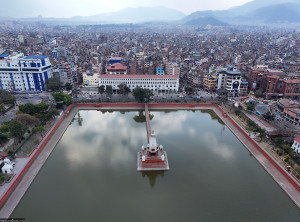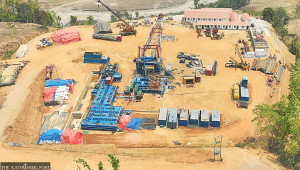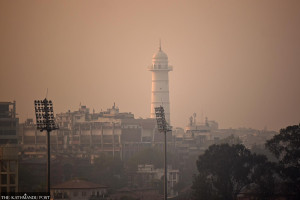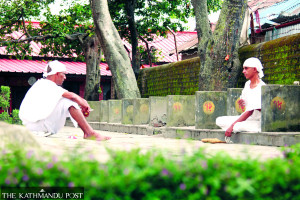Climate & Environment
Heat wave scorches central and eastern Tarai
Temperatures have crossed 40 degrees in several districts. Met office warns the hot and dry spell will continue.
Arjun Poudel
Hot air starts blowing after 10 in the morning in some districts of the Tarai. Daytime temperatures in several districts have been hovering around 40 degrees Celsius for the last few days.
“It is difficult to come out of the house after 10,” said Krishna Kumar Gupta, chairman of Krishnanagar Municipality’s ward 2 in Kapilvastu district. “And frequent power cuts have made life difficult.”
With the maximum temperature crossing 40 degrees Celsius, many Tarai districts have been witnessing heat waves since Friday, according to the Meteorological Forecasting Division of the Department of Hydrology and Meteorology.
“People residing in the mid and eastern Tarai region will not get any relief in the coming days as no weather system has built up yet to bring rains,” Barun Poudel, a senior meteorologist at the division.
A heat wave occurs when the maximum and minimum temperatures at a location are unusually high over a three-day period. The Met officials said that there is a chance of rainfall in western and midwestern regions which could break heatwave conditions.
The department had issued a similar warning in the third week of April.
With the temperatures shooting up, many local units in the Tarai have closed schools.
Hospitals in the region reported an uptick in the number of patients suffering from fever and urine infections, among other illnesses. Health authorities have cautioned people about the risks of heat-associated illnesses.
“We have been urging people to stay hydrated, wear cotton clothes and remain indoors in the afternoon,” said Dr Pushpa Raj Poudel, spokesman of the Ministry of Health in Lumbini Province. “We have also alerted people about the risk of snake bites and vector-borne diseases.”
Exposure to excessive heat can result in headache, nausea, weakness, dizziness and fainting. Heat-related illnesses include heat stroke, heat exhaustion, heat cramps and heat syncope (fainting). Heat stroke is the most severe form of heat-related illness and requires immediate medical attention.
Doctors advised people not to come out of their homes in the afternoon, and to take sufficient fluids and water to remain hydrated to avoid the adverse effects of scorching heat.
The Met office has also advised people to take precautions against heat, lightning and strong winds.
According to the latest weather update of the division, Simara recorded 41 degrees Celsius, Janakpur 40.6 degrees Celsius, Nepalgunj 39.7 and Bhairahawa recorded 39.8 degrees Celsius, respectively. Likewise Baitadi and Dhangadhi recorded 37.5 and 36.9 degrees Celsius, respectively. The eastern city of Biratnagar recorded 38.4 degrees Celsius, according to the Met division. The maximum temperature in Kathmandu on the day was 31.5 degrees Celsius.
The Met office said that the monsoon is likely to be delayed by a few days this year.
The monsoon season in Nepal generally starts on June 13 and ends on September 23. Last year, however, it entered the country eight days ahead of schedule.
Normally, after the arrival of the monsoon, it takes one week for the clouds to spread across the country.
Globally, extreme temperature events are increasing in frequency, duration and magnitude. Scientists blame climate change for the early onset of summer and intense heat.
The average annual maximum temperature of Nepal rose by 0.056 degrees Celsius between 1971 and 2014, according to a study conducted by the Department of Hydrology and Meteorology (DOHM) in 2017.
Meteorologists have forecast below-average rainfall in the upcoming season. The department’s climate section, which forecast weather conditions for four months (June 1 to September 30), said that most parts of the country are likely to experience an above-average maximum temperature due to the El Nino conditions, a climatic pattern that generally brings dry weather.
Nepal is one of the world’s most vulnerable countries to the climate crisis and has witnessed frequent extreme weather events over the past decade and a half.




 21.72°C Kathmandu
21.72°C Kathmandu










